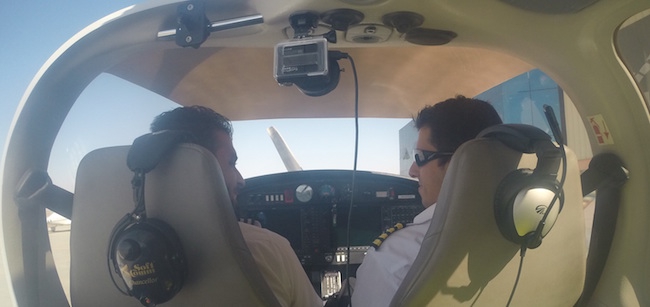
News
Camera in the cockpit: a new training aid
Installing cameras in the cockpits of commercial airplanes is one subject that would most certainly generate lots of heated debates between proponents and opponents. This is especially true after an incident or accident where knowing what had transpired inside the cockpit seconds or minutes before a catastrophic malfunction or mysterious crash is absolutely crucial in determining the root cause(s) and/or any contributing factor(s).
January 28, 2016 By Ayla Aviation Academy

Ayla Aviation Academy, an Aviation Training Organization (ATO), based in Aqaba Jordan pioneered and adopted the use of cameras as Standard Operating Procedure in all its training flights (both dual and solo) and started videotaping every single mission in early 2014. At the beginning, there was a slight resistance to change amongst Flight Instructors but as time went on and everyone realized the huge benefits, the new concept started to take hold and all training staff supported the new initiative.
The initial goals and objectives behind recording and archiving every single training exercise in video and audio were:
- Debriefing tool – Yes, a picture is worth a thousand words but a video is worth thousands of pictures. The ability to retrieve a video-recorded training exercise proved to be a fantastic training aid and made the debriefing process much more effective and robust.
- Progress evidence – Video recording of training exercises is undoubtedly solid evidence to share with a parent or sponsor if they inquire about training progress (or lack of) for a student; particularly if the student has accumulated extra flying hours above and beyond the set syllabus due to perhaps performance issues.
- “Business Like” cockpit – Even though cameras were not intended to police students and instructors, the presence of a third set of eyes in a training cockpit played a significant part in elevating the instructional atmosphere and established a new bar for the instructor/student relationship.
Incidentally, there were two additional key benefits that were not initially envisioned or intended when we first adopted this technique and only came about after the fact:
- Standardization tool for flight instructors and students – In addition to the regular standardization sessions conducted for instructors, the Chief Flight Instructor now has the opportunity to conduct “unannounced” spot checks or audits of video-recorded missions with the aim to provide feedback to the instructor as part of continuous improvement. The same thing works during a solo flight where a Flight Instructor is able to monitor the student progress and provide feedback.
- Poor man’s black box – In case of an incident, a camera in the cockpit could provide lots of insight as to the main chain of events leading up to an error or a violation. I don’t believe that we can answer the long standing question whether a camera in a commercial airplane cockpit is a friend or foe but I can unequivocally say that cameras are fantastic training aids.
It has worked for us and it can certainly work for others if deployed correctly.
For more information
www.aylaaviation.com